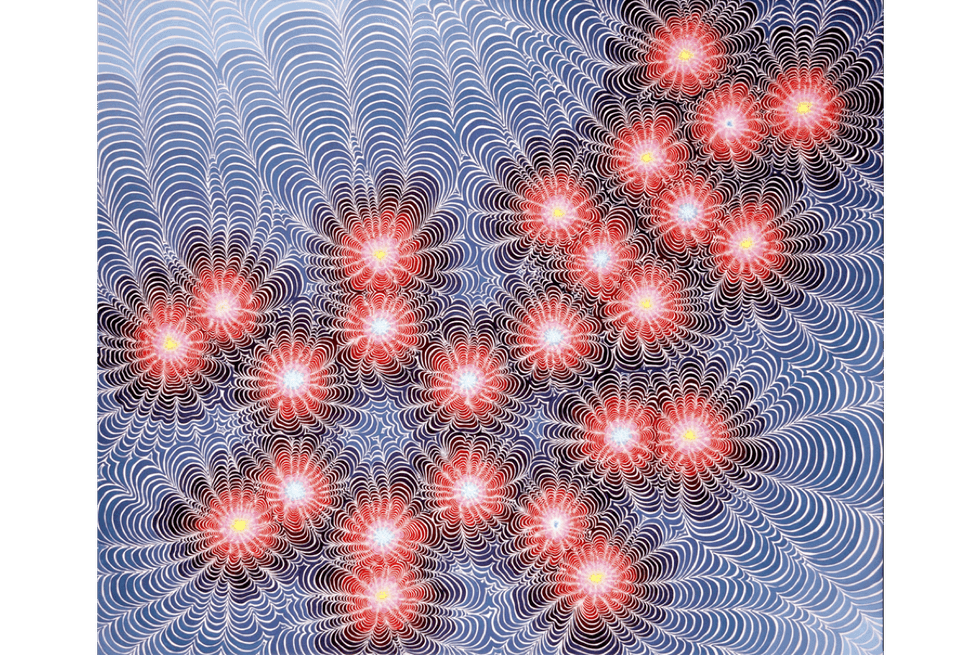
Over the last decade, psychedelics—named for their “mind-manifesting” quality—have made a comeback in modern science, public discourse, and cultural significance. Popular books and mainstream media have focused on promising clinical research with drugs like psilocybin, MDMA, and ayahuasca (or its clinical analog, pharmahuasca) as treatments for chronic mental health problems such as depression, PTSD, and addiction. On one hand, the medicalization of psychedelics is paralleled by the expansion of institutional research and private investment as these new treatments move toward federal rescheduling and, eventually, the market. On the other hand, the above-ground revival mirrors another one happening underground, in legal gray zones and the global tourist circuit: the popularization of indigenous ceremonial healing (with psilocybin-active mushrooms, ayahuasca, iboga, peyote and san pedro cacti, and the toad secretions of bufotenin) among otherwise modern people from urban centers. A semantic drift reflects the currency of such practices; what were once “psychedelics” are now often referred to, even outside of these traditional contexts, as “entheogens” (meaning “god-generating”), “plant medicine,” or simply “medicine.” All of these developments have accelerated the push to decriminalize psilocybin in American cities as seen in a cascade of local movements over the last year. As mind-manifesting, god-generating, divinatory, curative, and unstable forces, these substances sit at the confluence of a number of topics pertinent to anthropology today: challenges to the practical, conceptual, and legal categories of modern medicine and subjectivity (such as the meaning of healing); spiritual legacies of colonialism and extractive capitalism and the contemporary politics of authenticity, appropriation, and recuperation; and critical departures from modern naturalism.
Notes on the Image
Serotonin is part of a series by artist Kelsey Brooks on psychedelics. The resemblance between the tryptamine psychedelics (e.g., DMT, psilocybin, and LSD) and this essential neurotransmitter is central to their effects on humans. Brooks was a scientist before becoming a professional artist. The print is based on meticulous paintings that began as molecular structures with dots in place of atoms that were then outlined by layers of color. Brooks said about the series, “I like to think of it as a colorful and kinetic representation of the tiniest pieces of our universe and of ourselves.”
Posts in This Series

Introduction: The Psychedelic Revival
Be it ayahuasca tourism, LSD microdosing, psilocybin therapy, or MDMA as treatment for PTSD, psychedelics are constantly in the news. Popular interest reflects ... More

On the Rehabilitation of Psychedelics as “Medicines”
“Here, read this!” J says, handing me a copy of Jim DeKorne’s (1994) cult classic, Psychedelic Shamanism. J is a fellow student in a mindfulness-centered, somat... More

The Pollan Effect: Psychedelic Research between World and Word
Psychedelic clinical trial researcher Albert Garcia-Romeu’s eyes lit up when I asked if participants’ expectations have increased in the wake of the publication... More

What about Psychedelics for Healthy People?
When I began research in 2010, psychedelic science was undergoing a sea change. New FDA approved clinical trials heralded the end of regulatory prohibition agai... More

Psychedelics and Race: A Profile of Dr. Monnica T. Williams
Dr. Monnica T. Williams is an African American clinical psychologist whose research positions include Associate Professor in the School of Psychology at the U... More

(Psychedelics) Beyond the “Neuro”
Nadia stands between Sofia and Tânia mimicking a shaking fit as her friends create a space around her with their presence. The women are demonstrating the body ... More

The Wild and Un/natural Science of Psilocybin Mushrooms in North America
This past year a wave of local and state campaigns have cropped up across the United States to decriminalize psilocybin mushrooms for personal use. Three of the... More

Re-territorializing María Sabina: Huautla, Mushrooms, and Politics
Sitting atop the Oaxacan portion of Sierra Madre Oriental Mountains, Huautla de Jímenez, a small Mazatec town of around thirty thousand people, has received its... More

Traveling for Treatment: Psychedelics and Addiction Care in Mexico
“When do we get our pills?” were the first words that Anthony said to me after he got in the car. I did not know the answer; I did not even know to what pills h... More

Anthropophagy Unites Us! But Can It Heal Us?
We had justice as codification of vengeance. Science as codification of Magic. Anthropophagy. The permanent transformation of Taboo into totem. —Oswaldo de Andr... More

Interview with Dimitri Mugianis
Dimitri Mugianis facilitates the “We Are the Medicine” circle at New York Harm Reduction Educators, incorporating ceremony and ritual with active drug users a... More

Rightist Psychedelia
Psychedelics catalyze the invention of better forms of life, imaginary and real. That was not just the hope of the 1960s counterculture but also of the scientis... More

Teachers, Friends, Allies: What Do We Make of Psychedelic Animism?
I’m still pretty pragmatic and mechanistic but I definitely am open to . . . the idea that all the different life forms have a consciousness and a perspective a... More